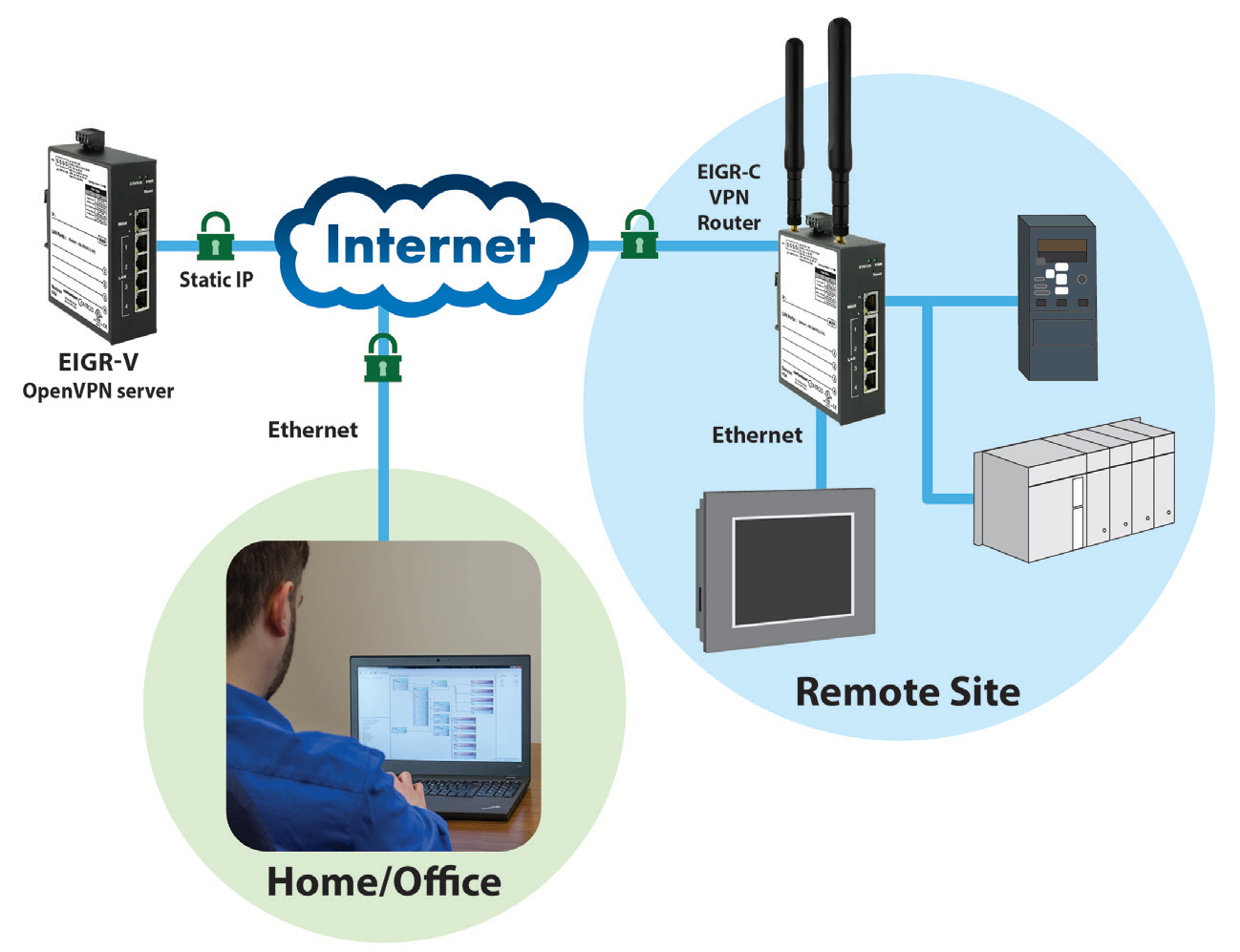Control Network Newsletter

Understanding Self-Hosted VPN—Secure, Remote Communication Over the Internet
Accessing machines at remote sites over the Internet can be a challenge since firewalls block messages that originate from the Internet. Although it is possible to open up ports in the firewall by using Port Forwarding, IT professionals are reluctant to compromise the security of their network and usually decline this type of request. Without permission from the IT department, the systems integrator is left with few options. One solution to this problem is to incorporate a Virtual Private Network (VPN) service, such as Contemporary Controls' RemoteVPN subscription service.
Setting up an OpenVPN server on your own is not trivial. It typically involves setting up a root certificate authority and generating certificates and keys for the OpenVPN server and for each client device that intends to connect to this server. However, the EIGR-V router has a built-in webpage interface to generate certificates and keys for VPN client devices, without requiring users to download software or having to learn the complexities of setting up a VPN. One EIGR VPN router set to OpenVPN server mode and assigned a fixed public IP address resides at the client site or any other convenient site and uses the Internet for communicating to OpenVPN clients without any cloud service involved.
The Self-HostedVPN solution provides secure, remote access to any IP device by just using the VPN IP address for a device. There is no additional requirement to setup Network Address Translation (NAT) or Port Forwarding on the client routers, as they initiate outbound connections to the OpenVPN server. Furthermore, the OpenVPN client devices only require internet access – there is no requirement for a static or public IP address.

Example of a Remote Monitoring with Self-HostedVPN
To learn more about Self-HostedVPN, visit the RemoteVPN product page or view the Self-HostedVPN data sheet (PDF).